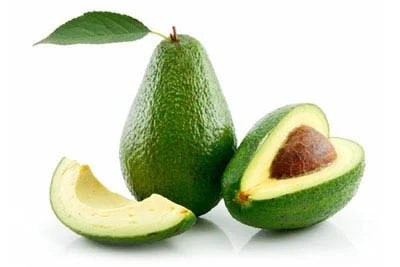-
Environmental Working Group
EWG’s 2013 Shopper’s Guide to Pesticides in Produce
EXECUTIVE SUMMARY
EWG’s 2013 Shopper’s Guide to Pesticides in Produce™
Eat fruits and vegetables!
The health benefits of a diet rich in fruits and vegetables outweigh the risks of pesticide exposure. Use EWG’s Shopper’s Guide to Pesticides™ to reduce your exposures as much as possible, but eating conventionally-grown produce is far better than not eating fruits and vegetables at all. The Shopper’s Guide to Pesticides in Produce™ will help you determine which fruits and vegetables have the most pesticide residues and are the most important to buy organic. You can lower your pesticide intake by avoiding the 12 most contaminated fruits and vegetables and choosing the least contaminated produce.
For the second year, we have expanded the Dirty Dozen™ with a Plus category to highlight two crops – domestically-grown summer squash and leafy greens, specifically kale and collards. These crops did not meet traditional Dirty Dozen™ criteria but were commonly contaminated with pesticides exceptionally toxic to the nervous system.
Though the Environmental Protection Agency has been restricting the uses of the most toxic pesticides, they are still detected on some foods. For example, green beans were on last year’s Plus list because they were often contaminated with two highly toxic organophosphates. Those pesticides are being withdrawn from agriculture. But leafy greens still show residues of organophosphates and other risky pesticides. That’s why they are on the Plus list for 2013.
Tests in 2008 found that some domestically-grown summer squash – zucchini and yellow crookneck squash — contained residues of harmful organochlorine pesticides that were phased out of agriculture in the 1970s and 1980s but that linger on some farm fields.
Genetically modified plants, or GMOs, are not often found in the produce section of grocery stores. Field corn, nearly all of which is produced with genetically modified seeds, is used to make tortillas, chips, corn syrup, animal feed and biofuels. Because it is not sold as a fresh vegetable, it is not included in EWG’s Shopper’s Guide to Pesticides in Produce. Nor is soy, another heavily GMO crop that makes its way into processed food.
The genetically modified crops likely to be found in produce aisles of American supermarkets are zucchini, Hawaiian papaya and some varieties of sweet corn. Most Hawaiian papaya is a GMO. Only a small fraction of zucchini and sweet corn are GMO. Since U.S. law does not require labeling of GMO produce, EWG advises people who want to avoid it to purchase the organically-grown versions of these items.
DIRTY DOZEN PLUSTM

Apples

Celery

Cherry tomatoes

Cucumbers

Grapes

Hot peppers

Nectarines – imported

Peaches

Potatoes

Spinach

Strawberries

Sweet bell peppers

Kale / collard greens +

Summer squash +
CLEAN FIFTEENTM

Asparagus

Avocados

Cabbage

Cantaloupe

Sweet Corn

Eggplant

Grapefruit

Kiwi

Mangos

Mushrooms

Onions

Papayas

Pineapples

Sweet peas – frozen

Sweet potatoes
CONNECT WITH EWG
FacebookTwitterYouTubePinterestOther organic foods worth considering:
- Beef
- Dairy-milk, cheese, cream
- Poultry
Seafood
Your Choices Matter
Take Action
Stay Connected
Worldwide, the demand
for seafood is increasing; yet many of the fish we enjoy are in trouble due to overfishing or destructive fishing and farming practices.
Support ocean-friendly seafood in three easy steps:
• Visit seafoodwatch.org • Download our free app • Join us on Facebook
Monterey Bay Aquarium
Purchase fish caught or farmed using environmen- tally responsible practices to support healthy, abundant oceans.
2. BUY: From our Best Choices list. If not available, choose from the Good Alternatives list.
1. ASK: “Do you sell sustain- able seafood?” Let businesses know this is important to you.
and Twitter
Seafood
3. LOOK: For the Marine Stewardship Councilblueeco- label in stores and restaurants.
CHINOOK SALMON
Updated July 2013
The seafood recommendations in this guide are credited to the Monterey Bay Aquarium Foundation ©201 3. All rights reserved. Printed on recycled paper.
Monterey Bay Aquarium
West Coast Consumer Guide Fall/Winter 2013
WATCH
®
Monterey Bay Aquarium Seafood Watch
®®
The Monterey Bay Aquarium Seafood Watch program creates science-based recommendations that help consumers and businesses make ocean-friendly seafood choices. Carry this pocket guide with you and share it with others to help spread the word.
|
|
|
This guide has a limited number of seafood items due to its size. For a full list of our recommen- dations please visit us online or download the app. Check every column, your favorite seafood could be in more than one. Best Choices Well managed, caught or farmed in environmentally responsible ways. Good Alternatives Some concerns with how they are caught or farmed. Avoid Overfished, or strong concerns with how they are caught or farmed. |
||||||



In what sense are these dirty or clean? In terms of dairy and wheat – or is it other allergies/intolerances, or to do with residual chemicals e.g. from pesticides?
The Dirty Dozen are the 12 most highly sprayed/contaminated with pesticides and have high levels of pesticide residue. The Clean 15 are sprayed the least and have low or no pesticide residue.
Pestisides disrupt endocrine system and function and hormone levels. If you cannot think well, think about going organic and removing pesticides.
Organic means there is no pesticide or fertilizer used ever!